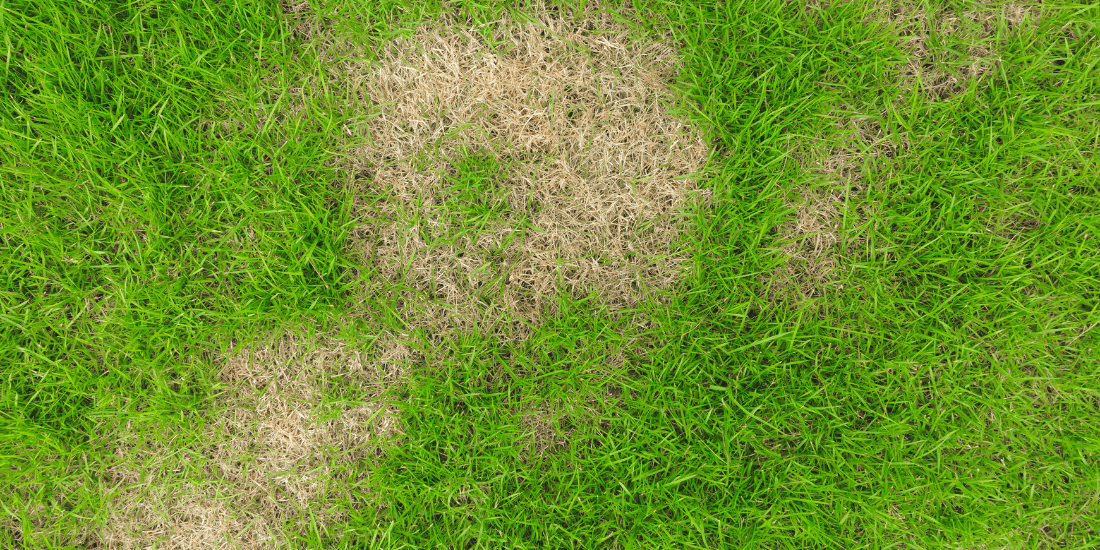How to plant grass seed in bare spots

We want to get down to how you repair your bare spots but if you’re curious about how they’re caused, check out our blog – How to reseed a patchy lawn.
Here are the only tips you need for fixing your lawn.
How to repair a lawn patch
Before you begin – mow your lawn, as you won’t be able to do this again until your bare patches have filled in!
1. Pick the right time to plant your grass seed
You have to wait for temperatures to get up to speed before overseeding any bare spots, or the patches will remain! Most grass seed germination occurs at 8-10 °C, meaning that in the UK, sowing seeds gives the best results in spring or autumn. This is when the weather will be mild and bring with it plenty of rain – making your watering routine a lot easier!
Not sure what seeds are best for your lawn? Check out our grass seed guide!
2. Prepare the soil
Before rushing into planting your seeds, you have got to get down and dirty pulling up any weeds and freeing moss from the area. If weeds have invaded your garden, try using a Feed, Weed and Moss Killer product so you can quickly get on with fixing your patches! Once you’ve dealt with the invaders, grab yourself a rake and roughen up the patchy area, giving the seeds a better chance of growing and establishing their roots quicker!
The final step in preparing your soil is ensuring you have a level seedbed. Unlevel seedbeds can cause seeds to fall wayside and patches to occur. After completing these steps, you should have the perfect seedbed and be ready to sow your seeds!
3. Spread it out
Spread your seeds evenly over your freshly prepared seedbed at our recommended rate of 35g per m2. Don’t worry if some overlap occurs between the seeds and your existing lawn – you don’t want any evidence of a patchy job once your new grass arrives!
4. Firm it down
Now you get to let out all your built-up frustration with your bare spots by stamping down the seeds to improve the seed-to-soil contact (You can use a roller if you want to take a less laboured approach).
5. Hydration is key
The work does not stop after the seeds are in the ground!You should water your new grass seeds daily for the first 6 weeks after sowing, giving your seeds the best chance to grow. If you want an easy life and all your hard work sowing, as mentioned above, you should aim to repair your bare patches on an overcast day where you expect rain.
6. Wait to mow
Once your pesky patches have disappeared, your lawn is ready for its first grass mow as a fully restored lawn! Your first cut should be done on the highest setting, as leaving it too short can damage the grass. Moving forward, we recommend lawns that get regular use should be cut to 20-40mm and those who want an ornamental lawn cut to 10-20mm.
EXTRA: Fetilise
You can use one of our grass fertiliser products to keep your lawn looking green and healthy - it can also help you avoid going back to step one!